Question 1 1 point Tjhe pH of blood is and when the pH valu
Question 1 (1 point)
Tjhe pH of blood is __________ and when the pH values go above the norm, the condition is called ________.
Question 1 options:
7.35-7.45.......acidosis
7...alkalosis
7.35-7.45...alkalosis
7....acidosis
Save
Question 2 (1 point)
Choose the correct sentence about proteins and their structure.
Question 2 options:
Hydrogen bonding rarely occurs in proteins
Most proteins are made from a short chain of amino acids
A denatured protein is equally effective as the protein in its original shape
A protein\'s conformation determines its function.
Save
Question 3 (1 point)
Whenever a partially charged H from one water molecule comes near a partially charged O from another water molecule, a _____ bond is formed.
Question 3 options:
ionic
hydrogen
non-polar covalent
polar covalent
Save
Question 4 (1 point)
Denaturation is always reversible.
Question 4 options:
Save
Question 5 (1 point)
Which of the following is incorrect about the neutron?
Question 5 options:
is represented by symbol \"n\"
has 1 amu
has no charge
is orbiting the nucleus
Save
Question 6 (1 point)
Which of the following is NOT true?
Question 6 options:
solutions are transparent
water is an important body lubricant
a base accepts H+
In hydrolysis reactions a water molecule is removed
Save
Question 7 (1 point)
Which does not belong?
Question 7 options:
fatty acids
lipids
cholesterol
adenine
source of energy
Save
Question 8 (1 point)
Which of the following is not true of covalent bonds?
Question 8 options:
can be hydrophobic
electrons can be shared equally
electrons can be shared unequally
NaCl is an example of covalent bonding
Save
Question 9 (1 point)
The atomic mass number tells us the number of protons in an atom.
Question 9 options:
Save
Question 10 (1 point)
If solution A has a pH of 5 and solution B has 10,000 times less the Hydrogen ion concentration, what is the pH of solution B?
Question 10 options:
1
3
9
10
Save
Question 11 (1 point)
The single most important energy source for the body is
Question 11 options:
starch
glucose
cholesterol
phospholipids
Save
Question 12 (1 point)
If an atom has3 valence electrons, it is more likely to accept additional electrons.
Question 12 options:
True
False
Save
Question 13 (1 point)
A group of two or more atoms of same type held together by a bond is called
Question 13 options:
a molecule
a compound
an isotope
an element
Save
Question 14 (1 point)
Which of the following is a physiological buffer?
Question 14 options:
digestive system
circulatory system
nervous system
urinary system
Save
Question 15 (1 point)
If a polymer is formed of aminoacids as monomers, its correct name is ____________.
Question 15 options:
glycogen
protein
DNA
phospholipid
Save
Question 16 (1 point)
The __________ system houses the body\'s disease fighting cells.
Question 16 options:
integumentary
circulatory
lymphatic
digestive
Save
Question 17 (1 point)
A _______ section divides the body into right and left portions.
Question 17 options:
frontal
transverse
sagittal
oblique
Save
Question 18 (1 point)
Which one is correct?
Question 18 options:
liver is located in left lower quadrant of the abdominal area
urinary bladder is located in right iliac region
spleen is located in the left hypochondriac region
descending colon is located in the right lateral abdominal region
Save
Question 19 (1 point)
The term visceral refers to
Question 19 options:
structures located on the skin surface
membrane layers lining walls of cavities
membrane layers covering internal organs
none of the above
Save
Question 20 (1 point)
Which one is likely to cause disease?
Question 20 options:
homeostasis
negative feedback
dynamic equillibrium
positive feedback
Save
Question 21 (1 point)
The following is an example of a positive feedback.
Question 21 options:
glucagon raizing low blood sugar
insulin lowering high blood sugar
a temperature of 98.6F following a temperature of 101.2F
a temperature of 102F followed by a temperature of 106F
Save
Question 22 (1 point)
Which of the following does not belong to the group?
Question 22 options:
brain
vertebral canal
spinal cord
abdominal cavity
cranial cavity
Save
Question 23 (1 point)
Which of the following is not completely covered by peritoneum?
Question 23 options:
small intestine
heart
stomach
appendix
Save
Question 24 (1 point)
Which is NOT correct?
Question 24 options:
digestive system eliminates solid waste
skeletal system is involved in hemopoiesis
respiratory system delivers gases to the tissues
muscular system produces heat
Save
Question 25 (1 point)
All of the following belong together except _____.
Question 25 options:
liver
gallbladder
pancreas
stomach
spleen
Save
| 7.35-7.45.......acidosis | |
| 7...alkalosis | |
| 7.35-7.45...alkalosis | |
| 7....acidosis |
Solution
1. The pH of blood (7.35-7.45) is maintained by physiological buffers in the form of bicarbonates, proteins etc. When pH falls below normal, it means more acidic (Acidosis), while as when pH goes above normal value, the blood becomes alkaline (Alkalosis).
Therefore, the correct answer is:7.35-7.45...alkalosis
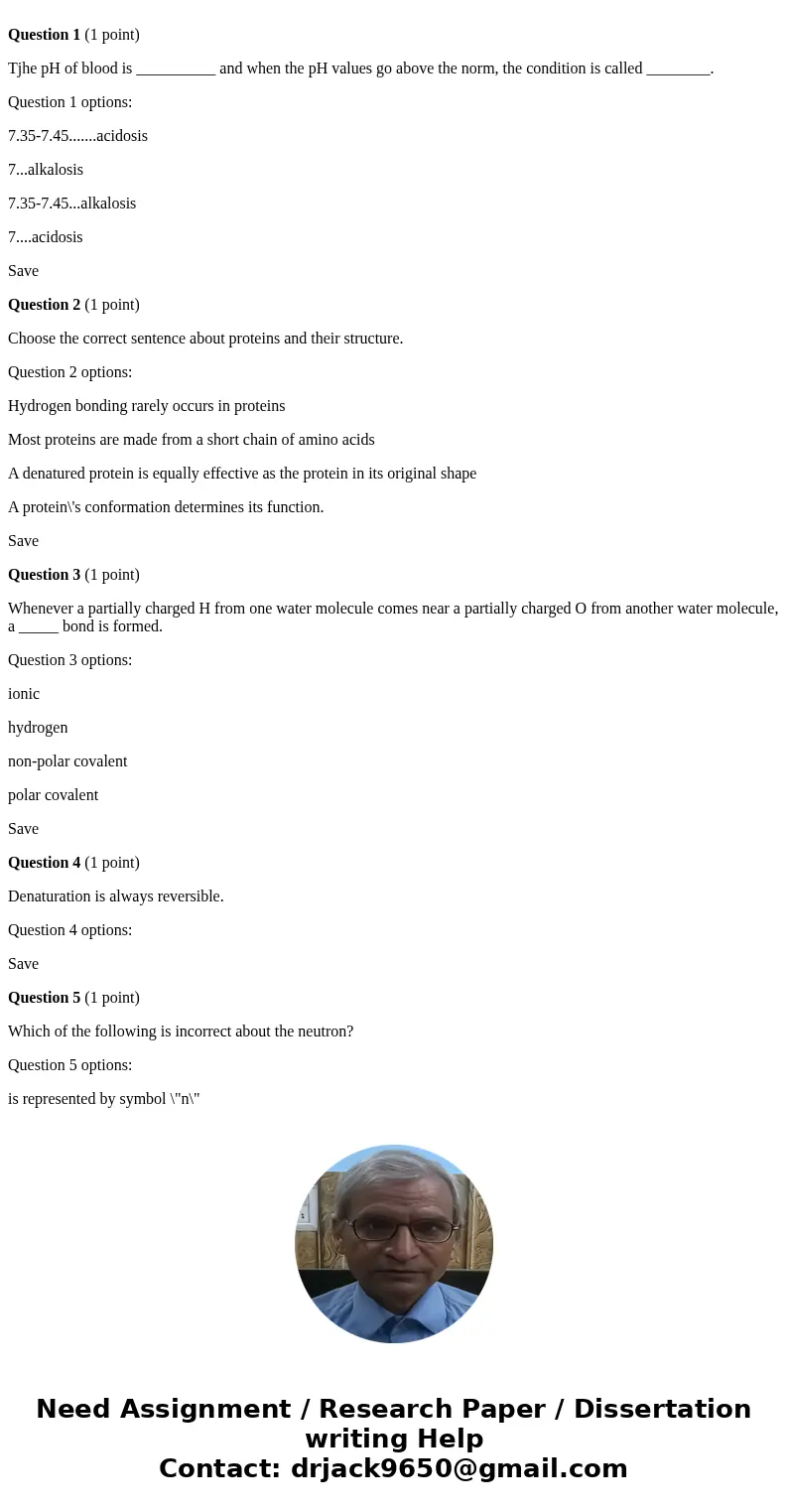
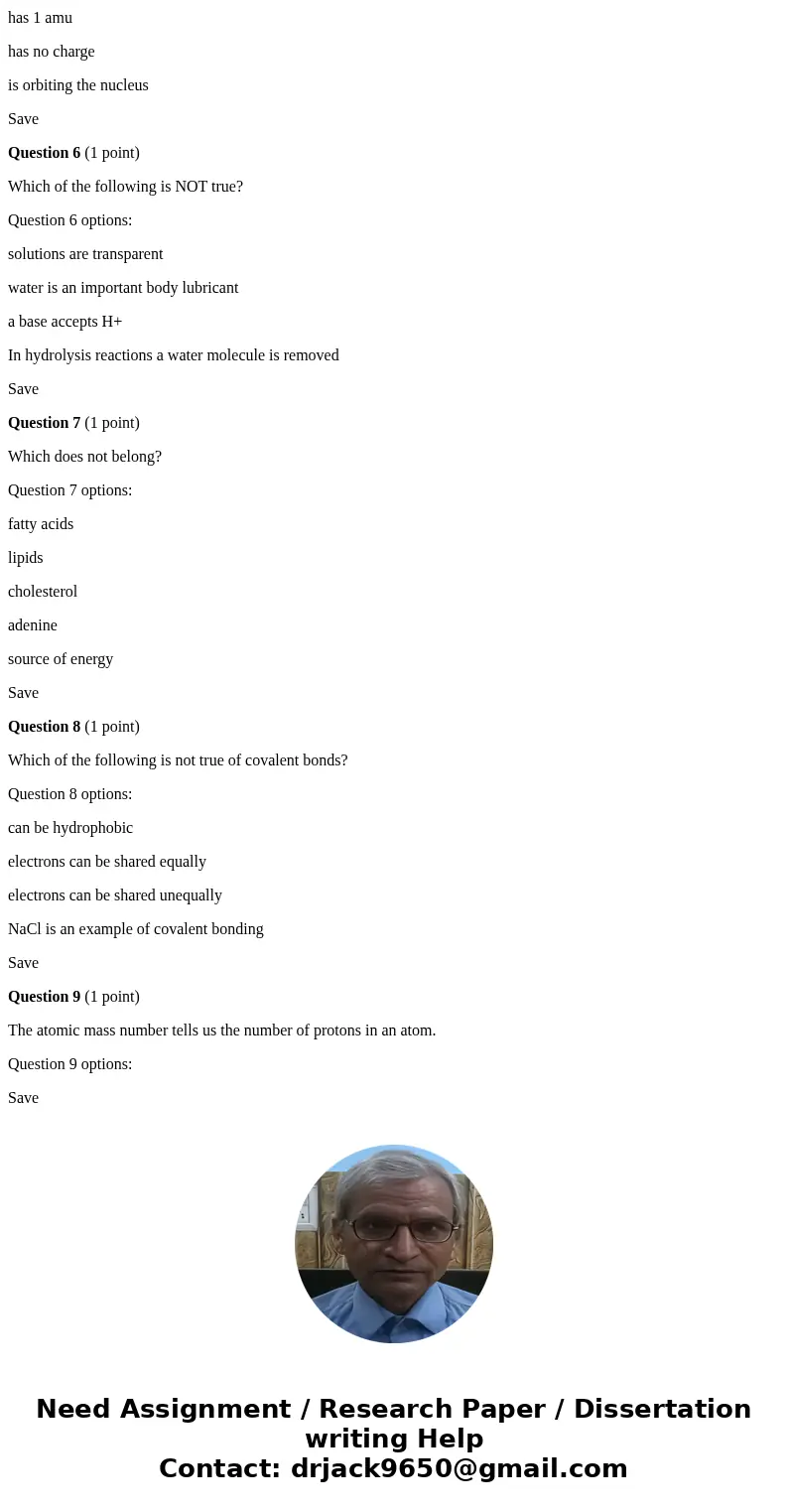
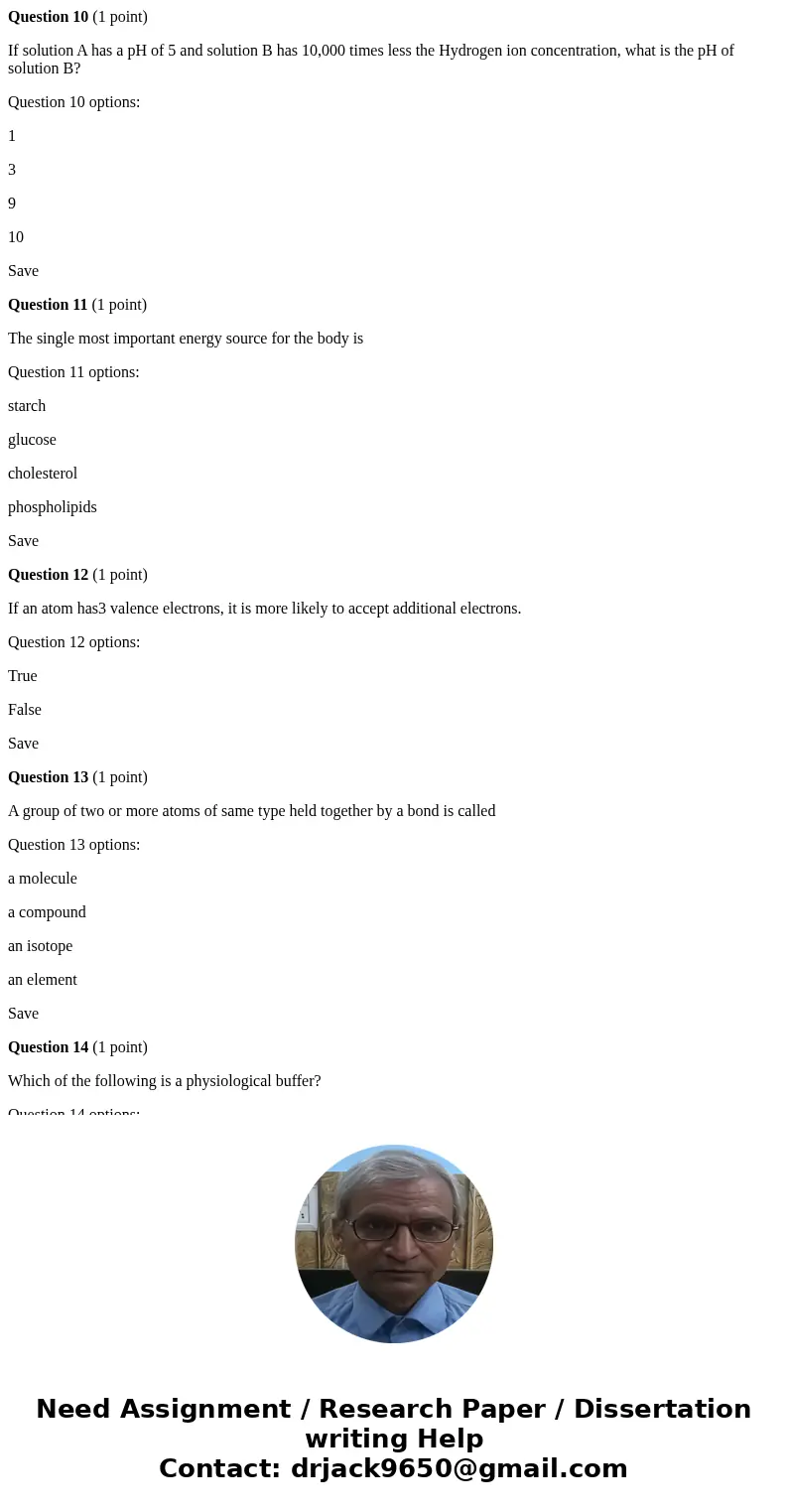
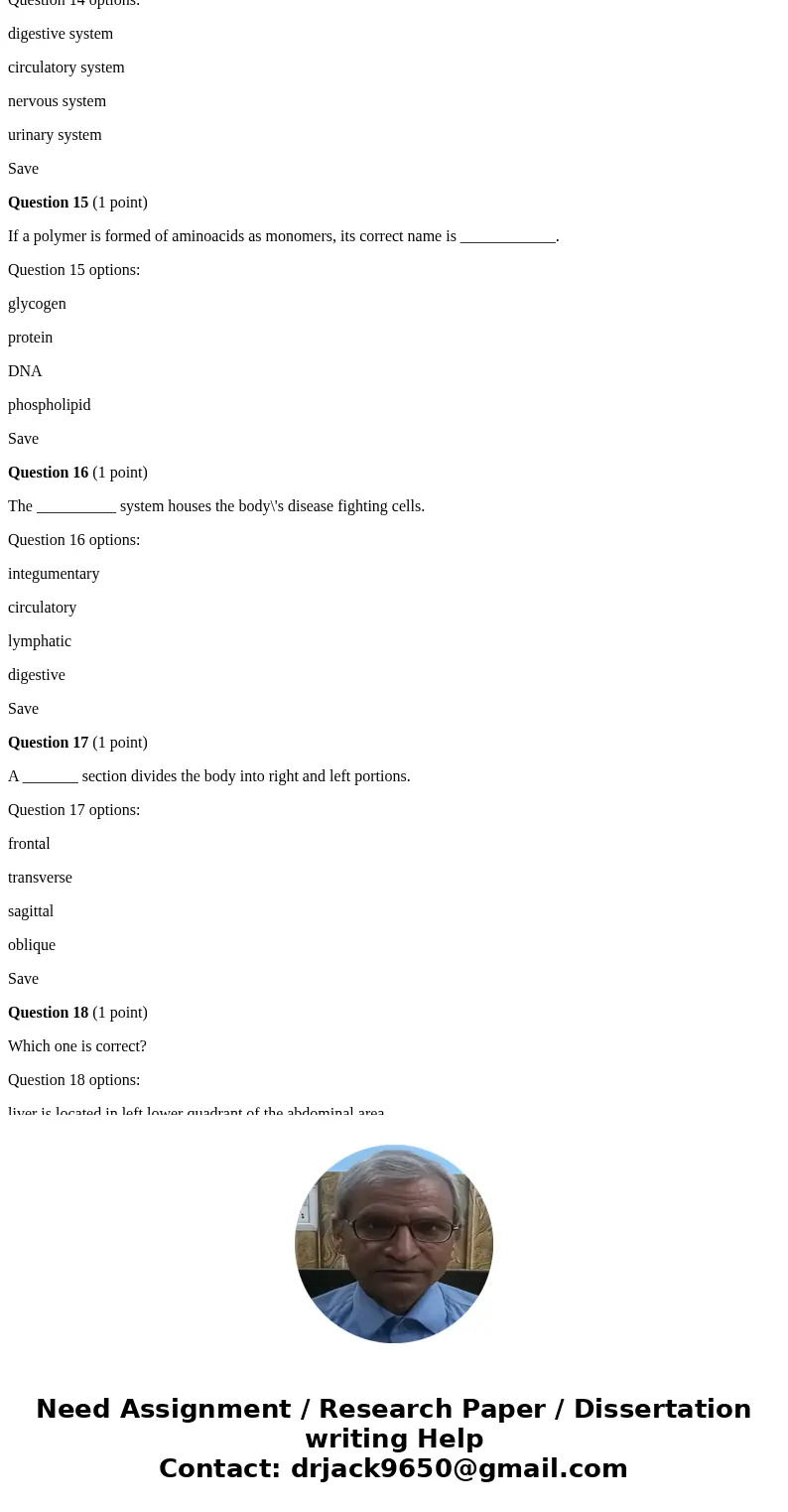
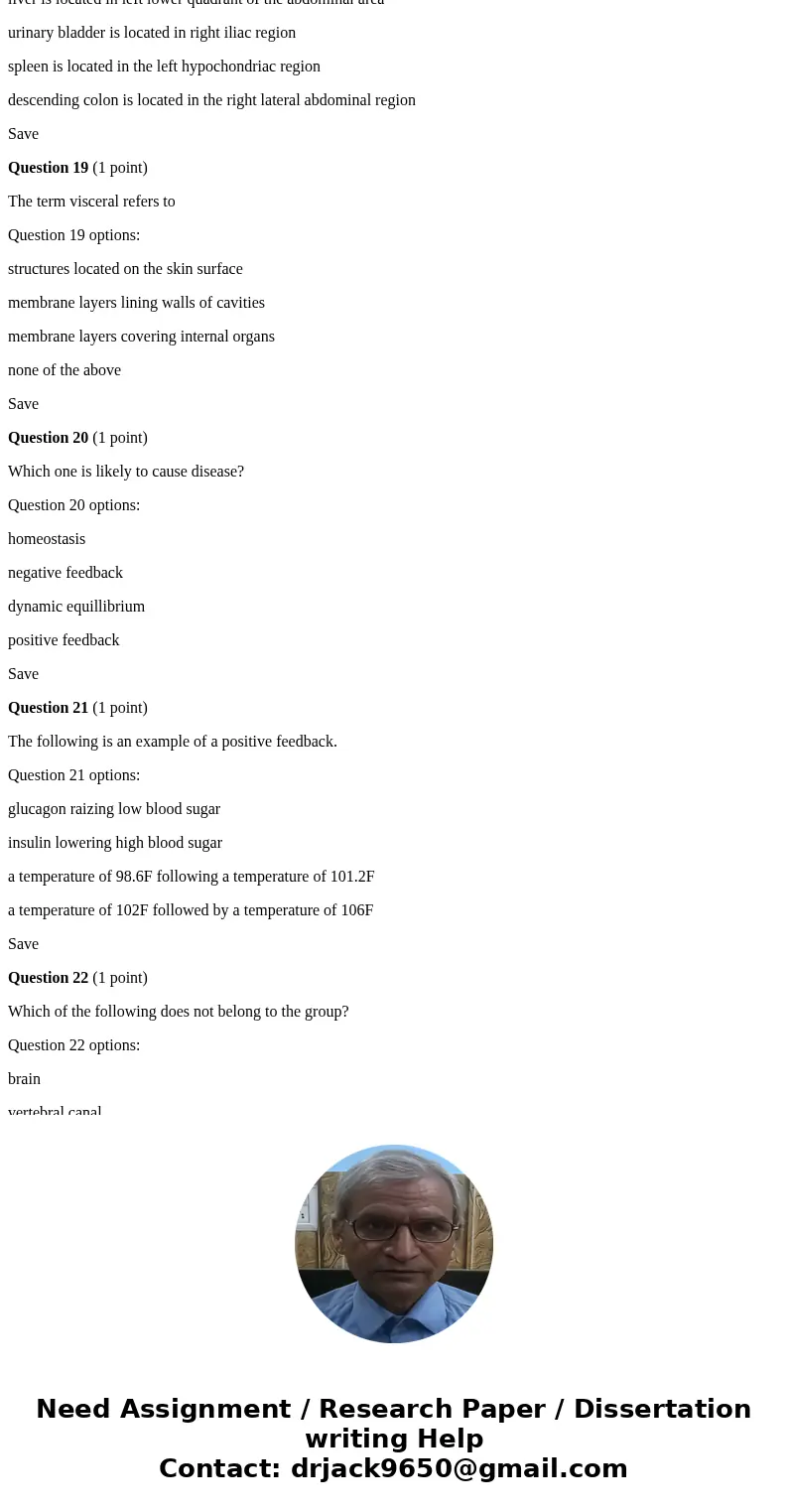
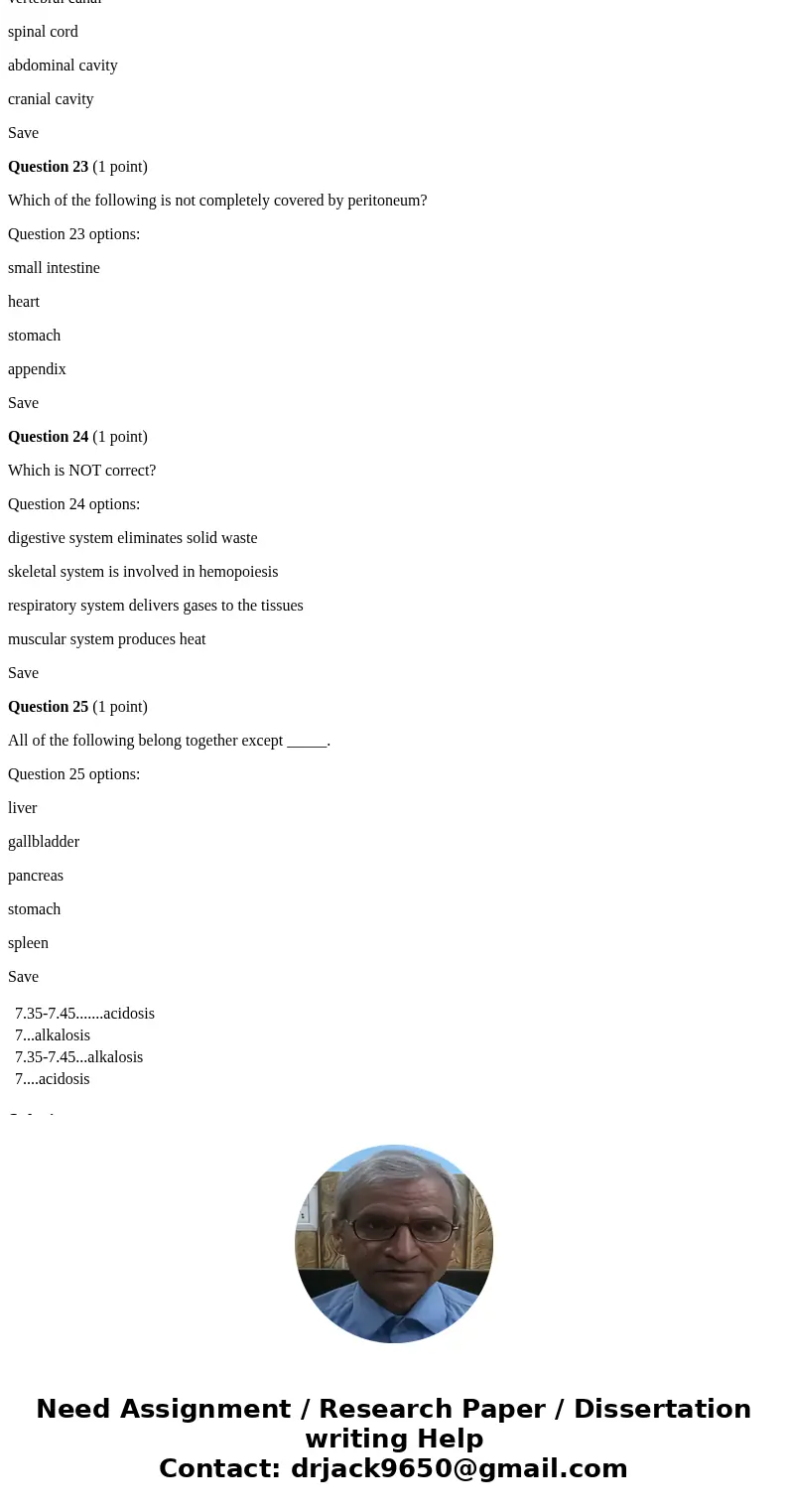
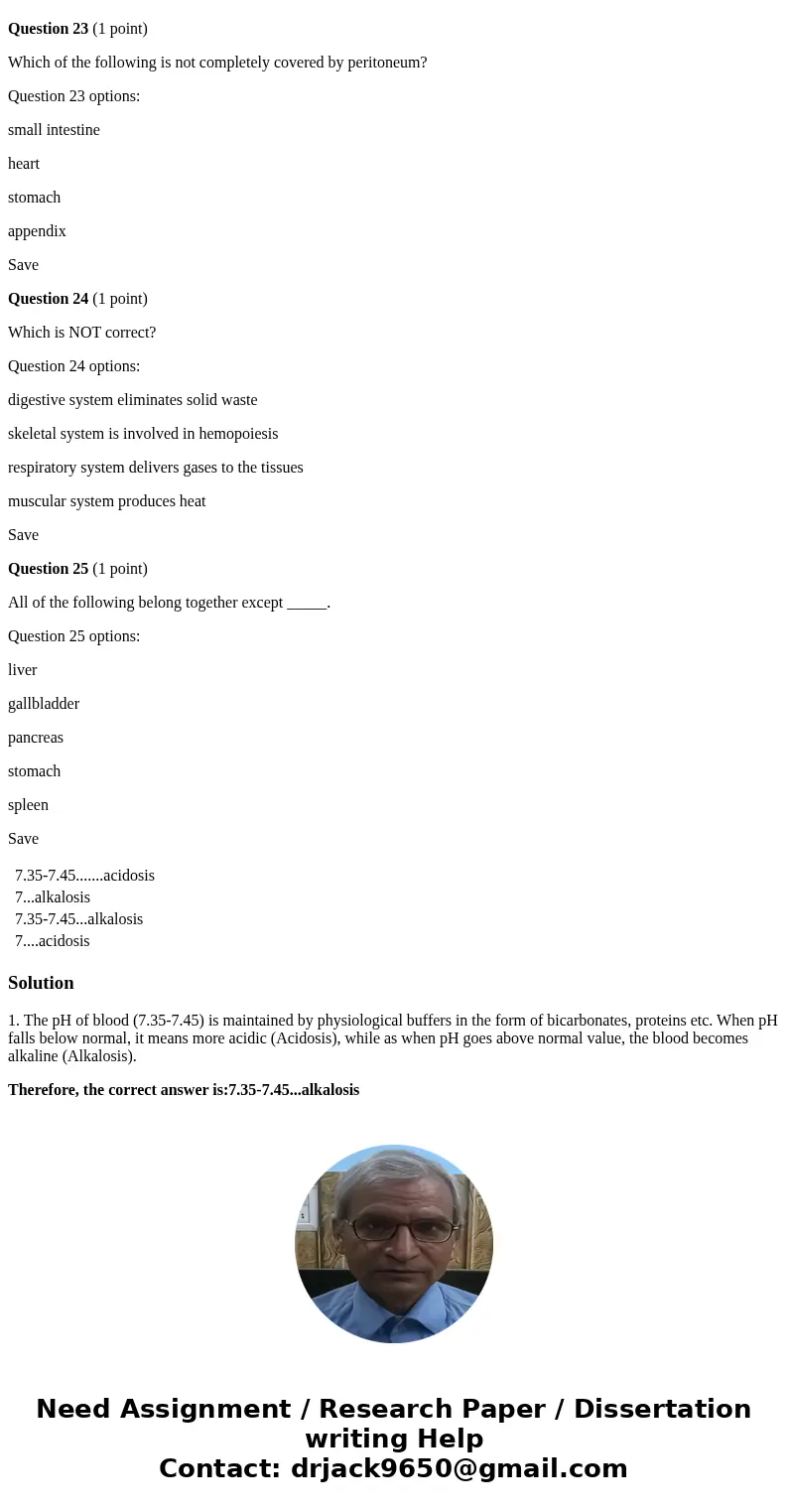
 Homework Sourse
Homework Sourse